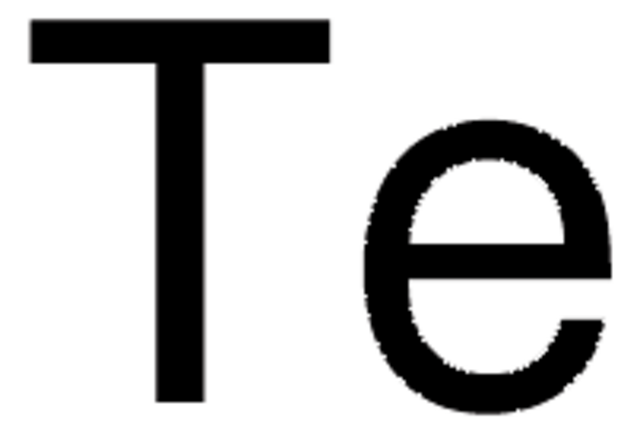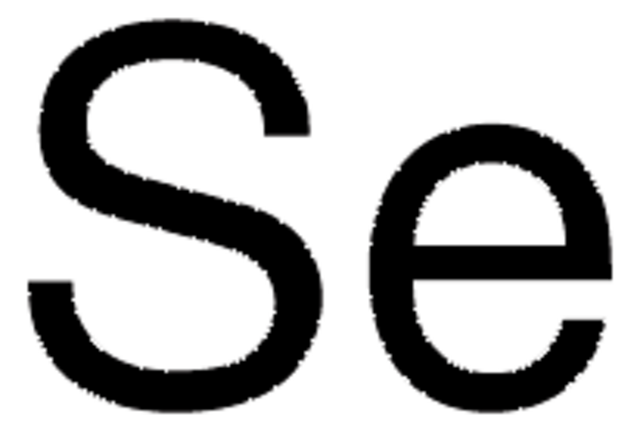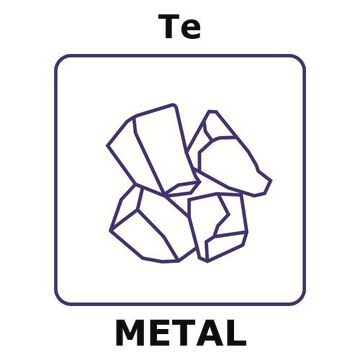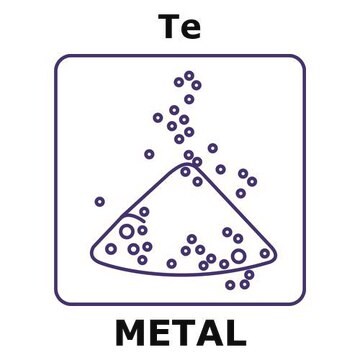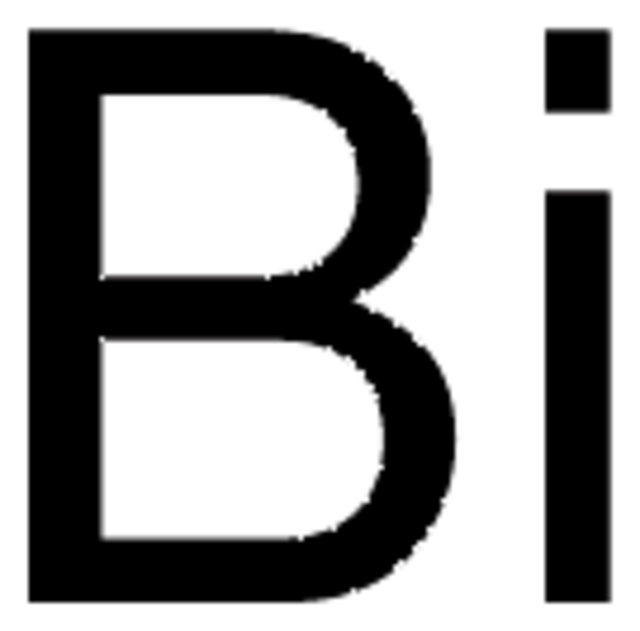All Photos(3)
About This Item
Empirical Formula (Hill Notation):
Te
CAS Number:
Molecular Weight:
127.60
EC Number:
MDL number:
UNSPSC Code:
12141913
eCl@ss:
38040201
PubChem Substance ID:
NACRES:
NA.23
Recommended Products
Quality Level
Assay
99.999% trace metals basis
form
pieces
resistivity
5.8-33 μΩ-cm, 20°C
bp
990 °C (lit.)
mp
450 °C (lit.)
density
6.24 g/mL at 25 °C (lit.)
SMILES string
[Te]
InChI
1S/Te
InChI key
PORWMNRCUJJQNO-UHFFFAOYSA-N
Looking for similar products? Visit Product Comparison Guide
Related Categories
General description
Tellurium is a p-type narrow band gap semiconducting metalloid with excellentphotoconductive and thermoconductive properties. It is widely as a fundamentalconstituent of photovoltaic solar panels, thermoelectronic devices, andalloys.
Application
Tellurium is an essential component for advanced materials including topological insulators such as thermoelectric materials and telluride nanowires. The form of this material is ideally suited for vacuum deposition techniques such as MBE.
Signal Word
Danger
Hazard Statements
Precautionary Statements
Hazard Classifications
Acute Tox. 4 Inhalation - Aquatic Chronic 4 - Lact. - Repr. 1B - Skin Sens. 1B
Storage Class Code
6.1D - Non-combustible acute toxic Cat.3 / toxic hazardous materials or hazardous materials causing chronic effects
WGK
WGK 2
Flash Point(F)
Not applicable
Flash Point(C)
Not applicable
Personal Protective Equipment
dust mask type N95 (US), Eyeshields, Gloves
Choose from one of the most recent versions:
Already Own This Product?
Find documentation for the products that you have recently purchased in the Document Library.
Customers Also Viewed
Zhe Liu et al.
Optics express, 21(6), 7799-7810 (2013-04-03)
ZnTe is an important p-type semiconductor with great applications as field-effect transistors and photodetectors. In this paper, individual ZnTe nanowires based field-effect transistors was fabricated, showing evident p-type conductivity with an effect mobility of 11.3 cm(2)/Vs. Single ZnTe nanowire based
Raymond J Turner et al.
Biotechnology advances, 30(5), 954-963 (2011-09-13)
Here, we overview the most recent advances in understanding the bacterial mechanisms that stay behind the reduction of tellurium oxyanions in both planktonic cells and biofilms. This is a topic of interest for basic and applied research because microorganisms are
Vijay P Singh et al.
Organic letters, 15(24), 6274-6277 (2013-11-28)
In an effort to improve the chain-breaking capacity of the natural antioxidants, an octyltelluro group was introduced next to the phenolic moiety in β- and δ-tocopherol. The new vitamin E analogues quenched peroxyl radicals more efficiently than α-tocopherol and were
Biomethylation of selenium and tellurium: microorganisms and plants.
Thomas G Chasteen et al.
Chemical reviews, 103(1), 1-25 (2003-01-09)
Guizhong Wang et al.
Optics express, 21(4), 4703-4708 (2013-03-14)
The octave-spanning spectrum was generated in a tellurite glass based microstructured fiber pumped by a 528 MHz repetition rate Yb:fiber ring laser without amplification. The laser achieved 40% output optical-to-optical efficiency with the output power of 410 mW. By adjusting
Global Trade Item Number
| SKU | GTIN |
|---|---|
| 204544-20G | 4061838767042 |
| 204544-100G | 4061838767035 |
Our team of scientists has experience in all areas of research including Life Science, Material Science, Chemical Synthesis, Chromatography, Analytical and many others.
Contact Technical Service